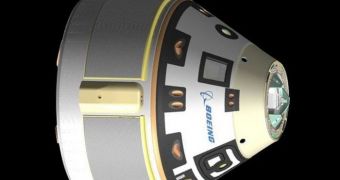A number of corporations involved in the private spaceflight industry say that they want to beat the American space agency in a race to put astronauts on low-Earth orbit again. At this point, NASA estimates that the soonest it can do this is 2017, whereas companies are aiming for 2015.
There are several large players in this game, which have already demonstrated that it's possible to develop a spacecraft from scratch using proprietary funding, and a little help from NASA. The issue that remains is whether one or more of these companies will be able to come through.
The space agency is looking to develop the Space Launch System heavy-lift rocket by 2017, when a first flight test of the new prototype is scheduled. Its Orion Multi-Purpose Crew Exploration Vehicle (MPCV) will undergo its first trials as soon as 2013.
Therefore, the earliest time that NASA could fly a manned space mission again is 2017-2018, assuming development goes according to plan, and that no large cost overruns are met. But corporations such as Space Exploration Technologies Corp. (SpaceX) already have an advantage.
This particular company demonstrated that it can launch an unmanned space capsule in LEO in December 2010, after completing its first-ever test flight of its Falcon 9 delivery system in June 2010.
Officials at the company say that they expect to have an unmanned Dragon space capsule converted to an astronaut carrier within three years. They add that the spacecraft was originally developed with NASA's stringent guidelines for human spaceflight in mind, so the conversion should be easy.
SpaceX, Boeing and Orbital Sciences Corporation (OSC) are just three of the companies that are benefiting from NASA funding in their attempt to build spacecraft capable of reaching LEO and servicing the International Space Station (ISS).
The American space agency has made it perfectly clear that it is not competing with these corporations, but rather contributing to their respective programs through the Commercial Crew Development (CCDev) program, Space reports.
“Obviously, our focus is to close the gap. We want an American-led system in order to get us back into low-Earth orbit, just like we've had for the last 30 years,” says the CCDev program manager at NASA, Ed Mango.
At this point, the agency is relying on Russian-built Soyuz spacecraft to get its astronauts to the Moon. NASA has a contract with the Russian Federal Space Agency (RosCosmos) for renting a number of seats on the capsules over the coming years, at more than $30 million per seat.

 14 DAY TRIAL //
14 DAY TRIAL //